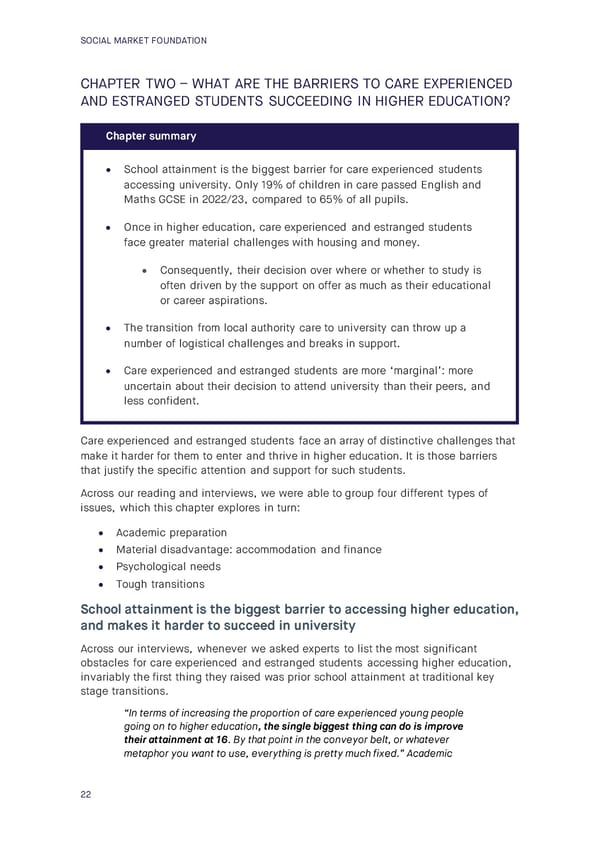SOCIAL MARKET FOUNDATION CHAPTER TWO – WHAT ARE THE BARRIERS TO CARE EXPERIENCED AND ESTRANGED STUDENTS SUCCEEDING IN HIGHER EDUCATION? Chapter summary • School attainment is the biggest barrier for care experienced students accessing university. Only 19% of children in care passed English and Maths GCSE in 2022/23, compared to 65% of all pupils. • Once in higher education, care experienced and estranged students face greater material challenges with housing and money. • Consequently, their decision over where or whether to study is often driven by the support on offer as much as their educational or career aspirations. • The transition from local authority care to university can throw up a number of logistical challenges and breaks in support. • Care experienced and estranged students are more ‘marginal’: more uncertain about their decision to attend university than their peers, and less confident. Care experienced and estranged students face an array of distinctive challenges that make it harder for them to enter and thrive in higher education. It is those barriers that justify the specific attention and support for such students. Across our reading and interviews, we were able to group four different types of issues, which this chapter explores in turn: • Academic preparation • Material disadvantage: accommodation and finance • Psychological needs • Tough transitions School attainment is the biggest barrier to accessing higher education, and makes it harder to succeed in university Across our interviews, whenever we asked experts to list the most significant obstacles for care experienced and estranged students accessing higher education, invariably the first thing they raised was prior school attainment at traditional key stage transitions. “In terms of increasing the proportion of care experienced young people going on to higher education, the single biggest thing can do is improve their attainment at 16. By that point in the conveyor belt, or whatever metaphor you want to use, everything is pretty much fixed.” Academic 22
 Care and Learning in Higher Education Page 22 Page 24
Care and Learning in Higher Education Page 22 Page 24